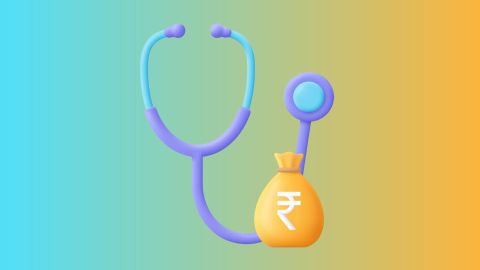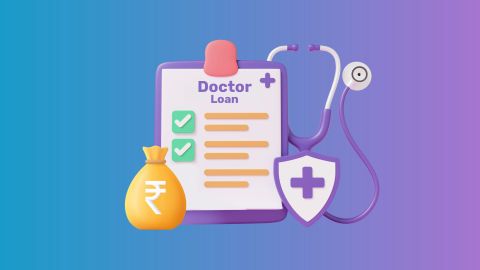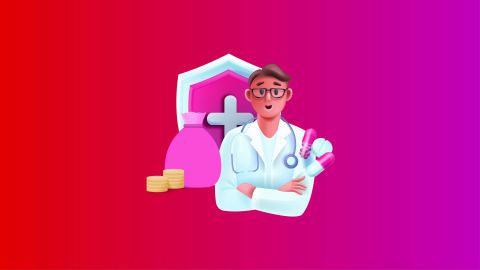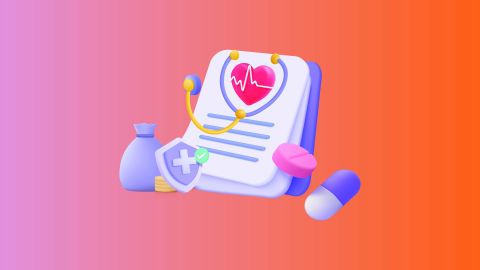Components of an EHR system
EHR systems are generally categorised into two types: inpatient and outpatient. Inpatient EHRs are designed for hospital environments, prioritising interoperability across multiple departments. Outpatient EHRs, also known as ambulatory EHRs, are suited for smaller medical practices and include features to manage appointments, prescriptions, and billing efficiently. EHRs are a critical component of broader healthcare information systems that support healthcare delivery.
An EHR system typically comprises several interconnected components:
- Patient health information: A comprehensive digital record containing medical histories, diagnostic results, and medication details.
- Order entry systems: Tools that enable electronic ordering of tests, medications, and treatments, streamlining traditionally complex processes.
- Decision support systems: Evidence-based tools that provide healthcare professionals with timely, relevant recommendations to support clinical decisions.
- Security protocols: Measures that safeguard patient data, ensuring secure storage and restricted access to authorised personnel only.
- Communication tools: Platforms that connect practitioners, laboratories, and pharmacies, fostering seamless coordination in patient care.
Types of Electronic Health Record (EHR) systems
Electronic Health Record (EHR) systems can be classified based on their deployment model and their use in inpatient or outpatient settings. Deployment options typically include on-premise, cloud-based, and ASP (Application Service Provider) models.
Deployment types
- On-premise: Installed on local servers, offering full control over data management and IT infrastructure.
- Cloud-based: Hosted on vendor servers and accessible via the internet, reducing the need for extensive in-house IT resources.
- ASP: Managed and hosted by the vendor, with remote access to the software and its functionalities.
Setting-specific types
- Inpatient EHRs: Designed for hospitals, supporting departmental interoperability and complex patient care management.
- Outpatient/Ambulatory EHRs: Tailored for smaller clinics, focusing on scheduling, prescriptions, billing, and communication tools.
Other considerations
EHR systems may also be hybrid, standalone, dedicated, or subsidised. The ideal choice depends on factors such as facility size, budget, existing infrastructure, and specific documentation requirements.
Electronic Health Record (EHR) standards
EHR standards ensure consistency and interoperability between different systems. Key standards include:
- HL7 (Health Level Seven): Protocols for exchanging health information.
- FHIR (Fast Healthcare Interoperability Resources): Modern standard for sharing healthcare data.
- ICD (International Classification of Diseases): Coding system for diagnoses.
- LOINC (Logical Observation Identifiers Names and Codes): Standard for lab tests and clinical observations.
Regulations on Electronic Health Records (EHR)
Various regulations govern the use of EHRs to protect patient information:
- HIPAA (Health Insurance Portability and Accountability Act): Ensures patient privacy and security.
- HITECH Act (Health Information Technology for Economic and Clinical Health): Promotes EHR adoption and meaningful use.
- GDPR (General Data Protection Regulation): Applies to healthcare data protection in the European Union, impacting global standards.
- National EHR standards: Local regulations that may vary by country or state.
How do Electronic Health Records (EHRs) improve patient care?
Electronic Health Records (EHRs) improve patient care by enhancing access to information, strengthening care coordination, supporting informed decision-making, and encouraging patient engagement. They also boost efficiency, reduce errors, and lower costs.
- Access to information: Instant access to complete patient histories enables timely and well-informed clinical decisions.
- Care coordination: Continuously updated, shared records ensure seamless continuity of care across providers.
- Decision-making: Built-in alerts and reminders help deliver safer and more effective treatments.
- Patient engagement: Online portals give patients access to their records, test results, prescription refills, and secure communication channels.
- Efficiency: Minimised paperwork allows healthcare professionals to devote more time to patient care.
- Error reduction: Accurate, up-to-date data reduces the risk of medication errors and misdiagnoses.
- Cost savings: Avoiding duplicate tests, improving billing accuracy, and streamlining processes lead to long-term financial benefits.
EHR vs. EMR key differences
Feature
|
EMR (Electronic Medical Record)
|
EHR (Electronic Health Record)
|
Scope
|
Limited to a single practice or organisation
|
Comprehensive, spanning multiple healthcare settings and providers
|
Data Sharing
|
Primarily used internally; limited or manual sharing with external entities
|
Designed for secure and seamless sharing among authorised healthcare providers and systems, says Health IT.gov
|
Data Accessibility
|
Patient records do not easily travel outside the practice
|
Patient information can move with them to new practices, specialists, hospitals, etc
|
Purpose
|
Primarily used by clinicians for diagnosis and treatment within their practice
|
Supports a broader view of patient care, encompassing collaboration, coordination, and patient engagement
|
Patient Access
|
Limited access, often through patient portals (if available)
|
More robust patient portals or interfaces, allowing greater access and interaction with their health information
|
Decision Support
|
May have basic clinical decision support tools
|
More advanced decision support tools, providing alerts, evidence-based guidelines, and assistance with diagnoses
|
Population Health Management
|
Limited or basic tools for population health management
|
Offers advanced analytics for identifying trends, improving outcomes, and managing population health effectively
|
Common features of Electronic Health Records (EHRs)
Electronic Health Records (EHRs) typically include the following features:
- Patient demographics: Basic information such as name, date of birth, contact details, and insurance coverage.
- Medical history: Records of past illnesses, surgeries, family medical background, and lifestyle factors.
- Diagnoses: Details of current and previous health conditions.
- Medications: Information on present and past prescriptions, including dosages and schedules.
- Lab and test results: Digitally stored reports from diagnostic tests and investigations.
- Immunisations: Comprehensive vaccination history.
- Allergies: Documented allergic reactions and sensitivities.
- Clinical notes: Summaries of patient encounters, treatment plans, and progress updates.
Advantages of Electronic Health Records
EHRs provide a wide range of advantages for both patients and healthcare providers, improving clinical outcomes, operational efficiency, and patient engagement.
- Improved care coordination and quality: By standardising patient care processes, EHRs help healthcare organisations deliver consistent, high-quality services. Quick access to accurate patient information allows medical professionals to make better-informed decisions, leading to improved treatment outcomes.
- Greater efficiency: EHRs streamline key processes such as appointment scheduling, billing, prescription refills, and communication between patients and providers. They also allow rapid sharing of multimedia files like diagnostic imaging across facilities.
- Better emergency care: Instant access to critical patient data, including allergies, current medications, and medical history, helps healthcare professionals make timely, potentially life-saving decisions in emergencies. Advanced surgical procedures using a robotic surgery system benefit from EHR data for pre-operative planning.
- Enhanced data accessibility: EHRs store patient records securely, granting access only to authorised individuals. This not only protects privacy but also empowers patients to engage with their providers and take an active role in managing their health.
- Cost savings: While implementation and maintenance can be expensive, EHRs reduce reliance on paper records, lower administrative costs, and minimise redundant tasks for healthcare staff.
- Population health management: By aggregating patient data, EHRs enable health authorities to implement public health programmes, monitor disease trends, and support clinical decision-making at a population level.
In India, adoption has been slower due to challenges such as high implementation costs, data security concerns, and the need for better digital infrastructure.
Key challenges in implementing Electronic Health Records
Implementing an Electronic Health Record (EHR) system can be a complex process for healthcare providers, particularly in diverse and resource-sensitive settings like India. Key challenges include:
- Security risks: Even with advanced encryption and cybersecurity measures, digital records are not immune to breaches. Providers must ensure compliance with data protection regulations and build robust security frameworks to maintain patient trust during and after the transition from paper-based records.
- Interoperability issues: Different healthcare facilities often use varied EHR platforms that may not integrate seamlessly. Lack of standardisation can hinder the smooth exchange of patient data, disrupting care continuity.
- Data inconsistencies: Manual entry errors, outdated information, or differing coding standards can compromise record accuracy. Maintaining clean, consistent data is crucial for reliable clinical decision-making.
- Storage and scalability: Managing large volumes of patient data requires secure, scalable storage systems. Balancing capacity, accessibility, and data integrity can be challenging, especially for smaller institutions.
- High costs: EHR adoption involves significant expenses, including software purchase, hardware upgrades, training, and ongoing maintenance, costs that can be prohibitive for small and mid-sized clinics in India.
- Training and adaptation: Staff must be trained to navigate and utilise the new system effectively. Ongoing support is essential to help providers adapt to new workflows and fully leverage the benefits of EHRs.
The future of Electronic Health Records (EHRs)
The future of Electronic Health Records (EHRs) is set to be shaped by emerging technologies, enhanced patient involvement, and proactive healthcare management.
- AI integration: Automates routine tasks, enables personalised care, and enhances diagnostic accuracy.
- Blockchain: Strengthens data security and facilitates efficient, interoperable information sharing across healthcare systems.
- Patient engagement: Expands through portals, remote monitoring, and self-management tools that empower individuals to take an active role in their health.
- Streamlined operations: Improves efficiency with automated data entry, clinical decision support, and better system integration.
- Population health: Uses data-driven insights to design targeted interventions and improve public health outcomes.
- Ongoing challenges: High implementation costs, privacy concerns, interoperability limitations, and the need for continuous training may affect adoption.
Conclusion
Electronic health records (EHRs) are transforming the healthcare industry by making patient data more accessible and manageable. As you consider integrating or upgrading your EHR system, Bajaj Finserv Doctor Loan, a type of professional loan, can provide the necessary financial support to ensure your practice stays at the forefront of medical technology. Embracing EHRs not only improves patient care but also enhances overall operational efficiency.





